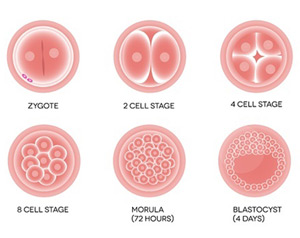Blastocyst Culture

Among many of the assisted reproduction techniques like, In vitro fertilisation, Intra cytoplasmic sperm injection etc. oocytes are fertilised in controlled laboratory conditions with the sperm and incubated for the embryo development. Then the embryo(s) is/are implanted to the uterus of the patient. Extending the duration of embryo culture to the blastocyst stages for assisted reproduction offers several theoretical advantages over the transfer of cleavage stage embryo.
These includes : -
- higher implantation rate
- the potential decrease of the no. of embryo transfer
- the opportunity to select the most viable embryo
- a better temporal synchronisation between embryo and endometrium at the time of transfer
Traditionally, embryos are transferred to the uterus on day three after fertilization and generally three or four embryos are transferred. However, it is now possible to grow embryos in the laboratory to the blastocyst stage of development, which occurs on day five after fertilization when the embryo has 50-200 cells. Typically, the strongest, healthiest embryos make it to blastocyst stage as they have survived key growth and division processes and have a better chance of implanting once transferred. The selection of potentially more viable embryos allows the embryologist to transfer fewer embryos, often one or two, lowering the risk of high order multiples while maintaining high pregnancy rates.
But it is to be remembered that blastocyst transfer is not an option for all IVF patients. The technique is most successful with patients who are younger and have a large number of eggs available at retrieval. On average, patients with six or more high quality embryos on day three are the best candidates for blastocyst culture because there is a better chance of more embryos growing successfully to the day five.
Spare blastocysts can be vitrified or frozen to give couples a chance for a second child - or to try again if the fresh IVF cycle fails. If anyone has two or more good quality blastocysts left after the transfer of the embryo, these can be freezed. Now a day a process called vitrification is used to freeze the embryos very rapidly and then stored in liquid nitrogen. They are then there for the patients to use at any time in the future within the time period the patient has consented to. But it is to be remembered that every spare blastocyst cannot be stored, it is better to be decided by the embryologist that is it in a condition to be stored or not. The embryologist then ask for the patient consent to do the needful.
